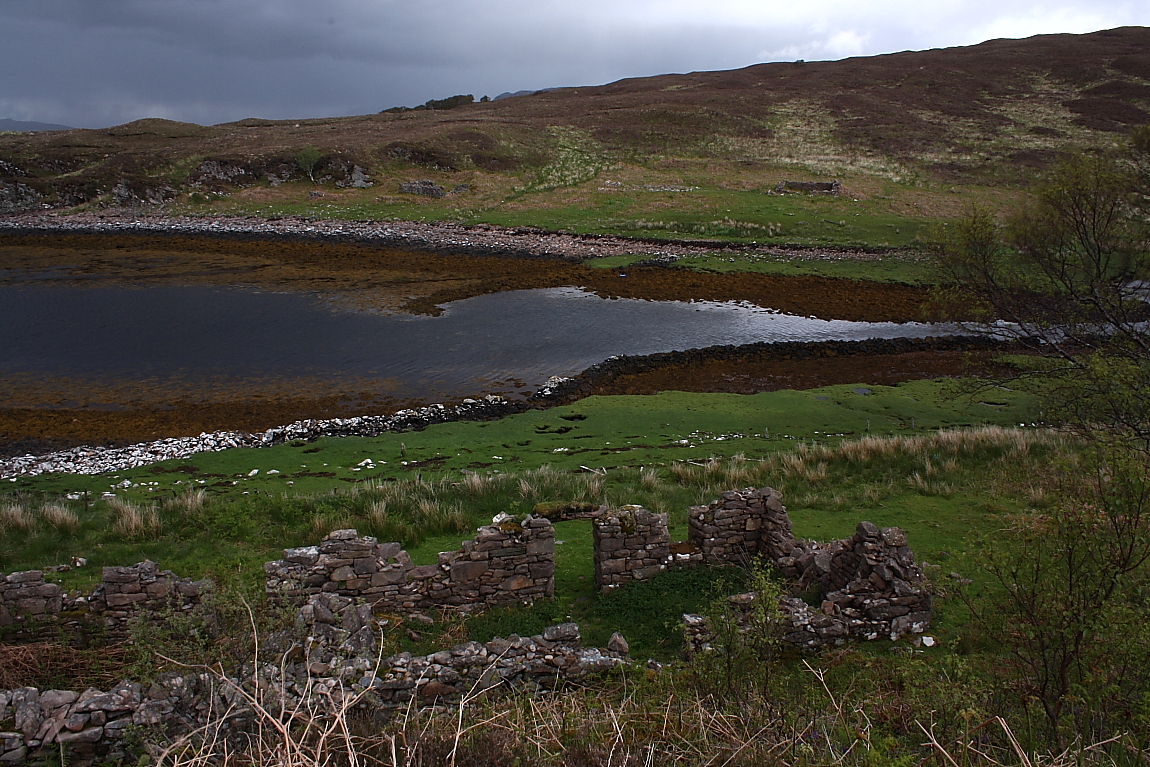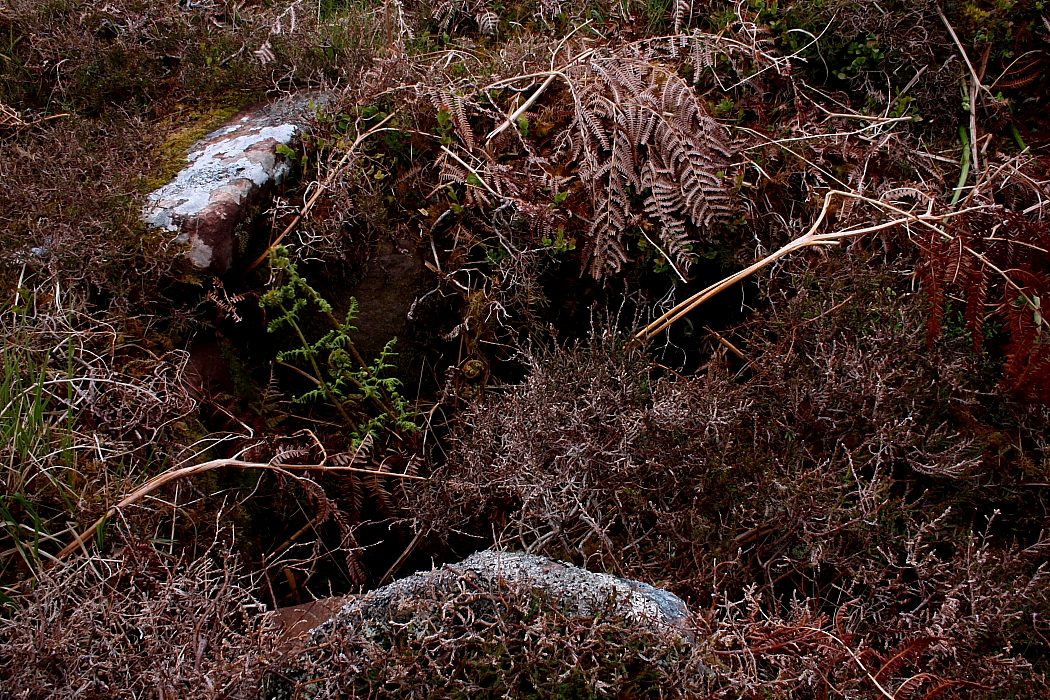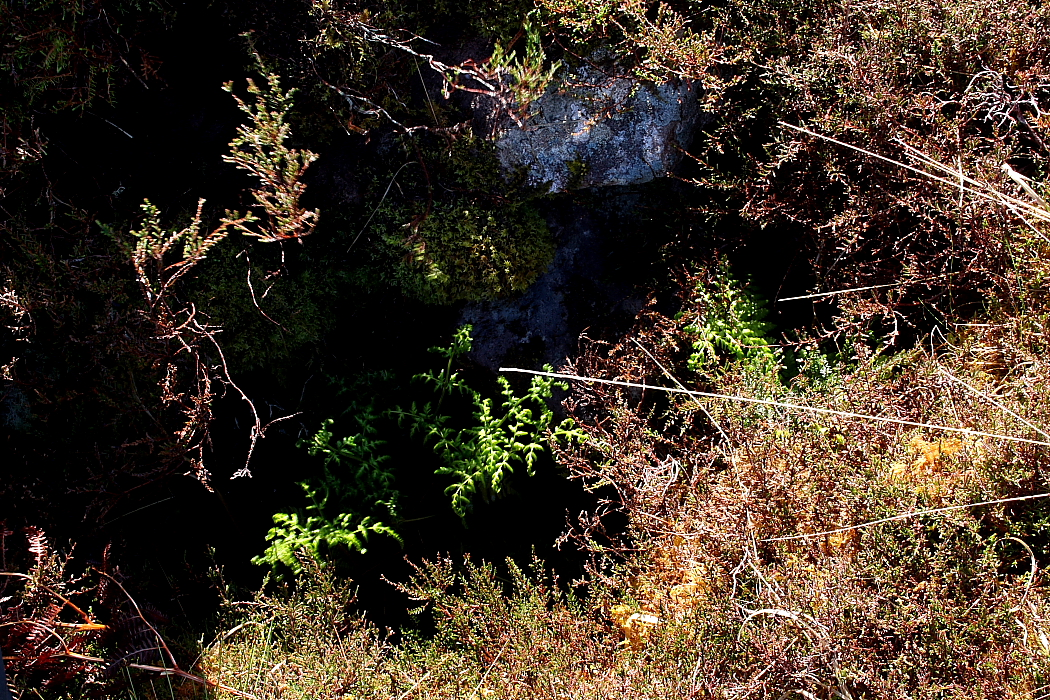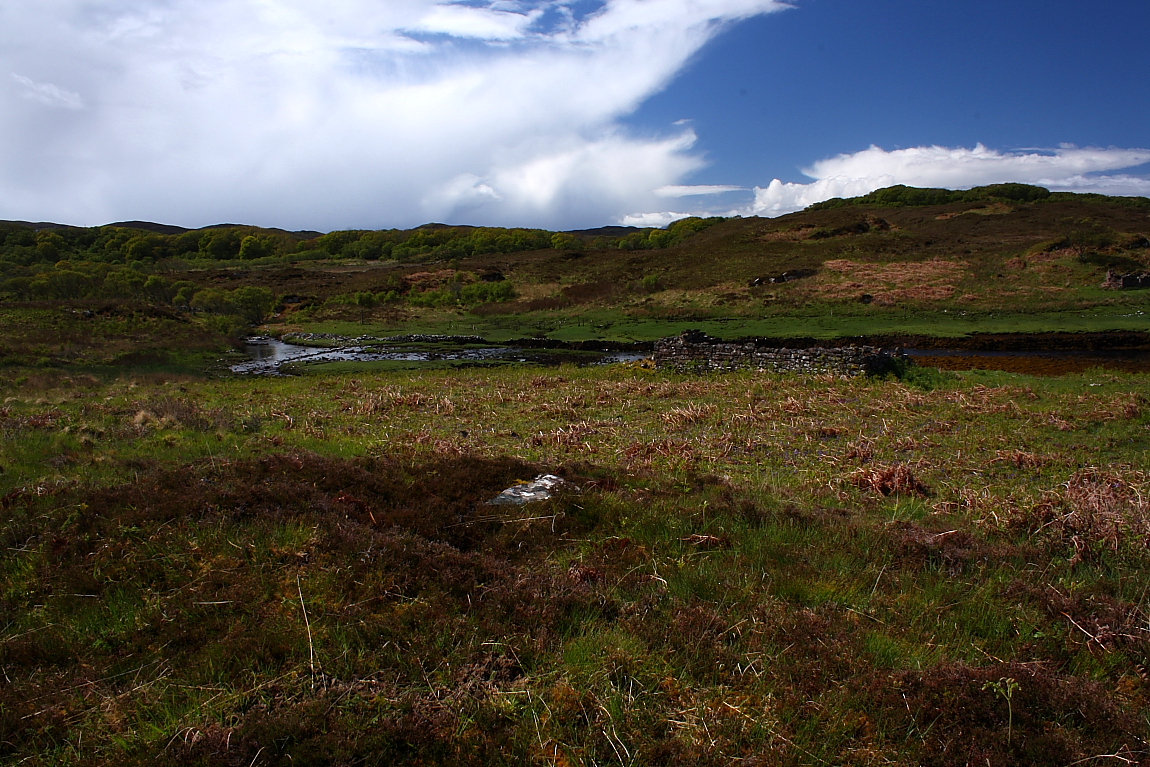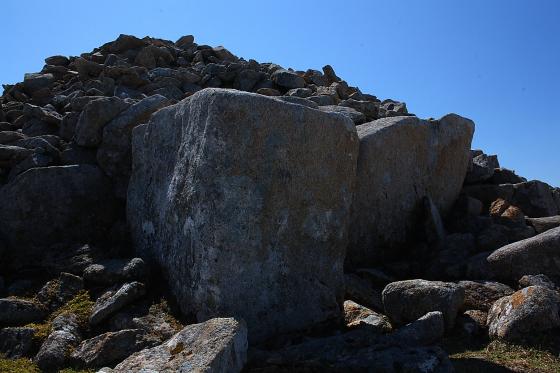Ah, Sleat .... at last. Yeah, this is the first occasion I’ve ventured forth upon Skye’s southern-most, less mountainous peninsula. A sorry state of affairs that reflects more upon my ‘upland’ prejudices than any lack of intrinsic beauty to be enjoyed here. A fact that can be categorically verified by anyone taking the time to visit the small coastal hamlet of Isleornsay, overlooking an idyllic harbour sheltering small boats from the more extreme vagaries of The Sound of Sleat.
Hmm... it might therefore seem a little obtuse, perhaps, to abandon this wondrous coastline shortly afterward, following Gleann Meadal across Sleat’s rocky spine to the peninsula’s opposite flank. But rest assured it’s not, the River Ord’s sinuous course guiding the traveller unerringly to the eponymous township (An t-Ord in Gaelic) and a beach with quite wondrously stunning views across Loch Eishort to The Cuillin. The single track road climbs steeply away from such sedimentary grandeur before reaching a small parking area, this just before a cattle grid upon the southern flank of Sron Daraich. Light woodland screens the panorama so – boots on – I head north to pick up the line of a fence crossing (more-or-less) the summit of the hill, this veering to the left to make a rough, heathery descent toward the merging of the Allt an Leth-bheinn and Loch Eishort at Inbhir Amlabhaig. Whoah... quite an odd experience, this. Clearly I’m not used to descending to see cairns. Or most other prehistoric monuments, now I come to mention it. But there you are.
Now if I had a 1:25K OS map finding the monuments would, maybe, have been a doddle. Needless to say I’ve just an old 1:50K edition lovingly procured from Oxfam in Chelmsford in my possession. Consequently I head for what are obviously the cairns.... to find that ‘they’, just as obviously, are not. Anyway to cut a long story short – as Tony Hadley once crooned – prospective visitors should head directly for the near bank of the river, not far from loch side, where two very forlorn-looking cairns stand most unimpressively behind the foundations of later dry stone structures. Both are choked with the ubiquitous heather virtually to the point of not resembling cairns at all... or at least to any noticeable degree.
However it is what lies within their hollow, albeit obscured interiors that makes the soggy downhill stomp more than worthwhile... the clear remains of cists. TSC’s misc post has the technical detail; however I have to say that here – more than ever – it is the sensational landscape context that defines the sublime nature of the site. Proclaims it as if a loudspeaker fed through a Marshall amp turned all the way to eleven! Yeah, the silence is so overwhelming it is almost too loud to process. If that makes any sense? Archaeology and vibe in perfect harmony. Having said that the visuals are pretty good, too. Now I’ve often heard it said that perhaps the finest mountain view in Scotland is that of the Black Cuillin from Elgol? The place where Midge Ure and friends take a boat ride in Ultravox’s ‘Lament’ video. If so the vista of the same serrated peaks, Bla Bheinn to the fore, rising across Loch Eishort from these cairns takes that celebrated scene to the wire. No really. I reckon it does.
But wait, the best is yet to come. As I lay back and proceed to not do an awful lot (now there’s a contradiction in terms) – except ride out the periodic storm fronts and bask in the light of the interludes – I recall that, according to Canmore at least, there is a further cairn overlooking the far (western) bank of the Allt an Leth-bheinn, apparently placed upon the crag looming above another, more substantial dry stone ruin.... the shell of an old school house? Now elsewhere reaching said far bank might well be an issue. Here, however, as luck (or rather resourceful locals) would have it, the river is crossed by stepping stones a little upstream. Yeah, functional and aesthetically pleasing... everyone’s a winner. I therefore wander across dryshod to take a quick shufti and duly discover a very well preserved cist with capstone slipped to one side. OK, like its neighbours to the east the cairn is pretty nondescript as a stone pile... but so what with such marvellous internal attributes? What’s more a pretty persuasive case could be given for this cairn to actually have contained multiple cists in its time. What a haunting, ethereal location this is. Why, one of the cist’s substantial orthostats even possesses an enigmatic circular marking. Whether this is natural or artificial I’m not competent enough to determine. But it sure wouldn’t surprise me if it was the real thing.
The Black Cuillin, taking matters very literally indeed, glower across the water beneath a positively Wagnerian sky... as the progressively more vigorous movement of a couple of trees, their small stature clearly at odds with herculean survival tendencies, pre-empts the arrival of yet another storm front.
Sure enough the downpour catches me midway across the stepping stones. But I am dry before reaching the car.


